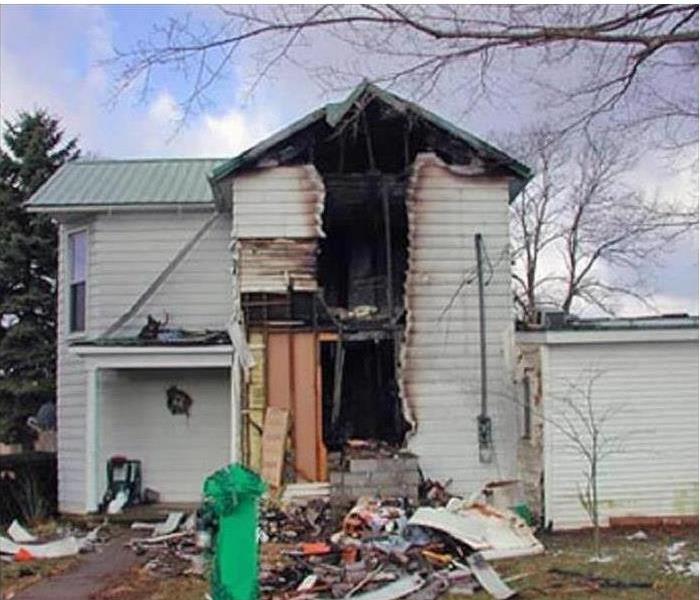This your Chimney at ricks for a fire..
11/21/2019 (Permalink)
Did you feel the chill in the air this past weekend? For many of us, there’s nothing quite like enjoying a crackling fire to chase away the cold weather. You’re sitting in your living room with your family enjoying the warm glow of the flames, and suddenly you hear a roaring noise. It almost sounds like a jet plane is flying right over your home! Huge amounts of dark smoke billow out of the top of your chimney – what is happening?!?
This is a scenario that plays out almost 25,000 times per year in the US: Chimney Fires. These fires can be very dramatic, or they may burn silently, but their silence holds no indication of the harm they may cause as they burn slowly at incredibly high temperatures. Regardless of the type, all chimney fires can cause substantial damage and risk to you and your family.
So what causes chimney fires? The build-up of creosote along the chimney lining walls can facilitate the start of a chimney fire. This build-up is caused by the unburned materials in the smoke accumulating along the chimney walls and creating a sticky substance that can easily catch fire. The smoke from the fire contains a substance similar to tar and when the temperatures within the chimney are below 250 degrees Fahrenheit, the substance will condense along the chimney surface. When the temperature drops below 150 degrees Fahrenheit, the substance turns into a dark, sticky substance that is also highly flammable.
The Good News: Chimney fires are almost entirely preventable!
Chimney fires are a dangerous and serious problem to have, but the good news is that they are also almost entirely preventable. You must be careful to only burn materials that are ready and meant to be burned. For example, only use seasoned, dry wood, newspapers, and dry kindling. Burning cardboard boxes, trash, or wrapping paper can cause the creation of excess creosote and put your home and family in danger. While using the correct fuel is important, a chimney fire can still occur even after taking these precautions. This is why annual chimney inspections and cleanings are a critical part of home maintenance. Most creosote is removed during annual chimney cleaning performed by chimney sweeps.
A clean chimney reduces the risk of a fire; so before you strike the first match for a fire this winter, consider scheduling a chimney inspection and cleaning. Some simple precautions can help you have a safe and happy winter season.
(Statistics Courtesy of U.S. Consumer Product Safety Commission (USCPSC))





 24/7 Emergency Service
24/7 Emergency Service
